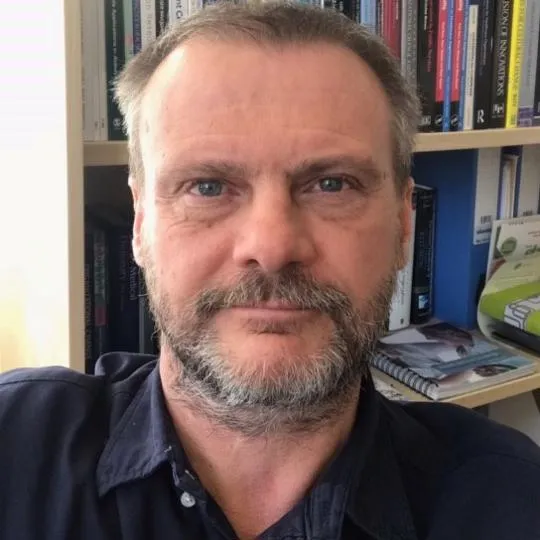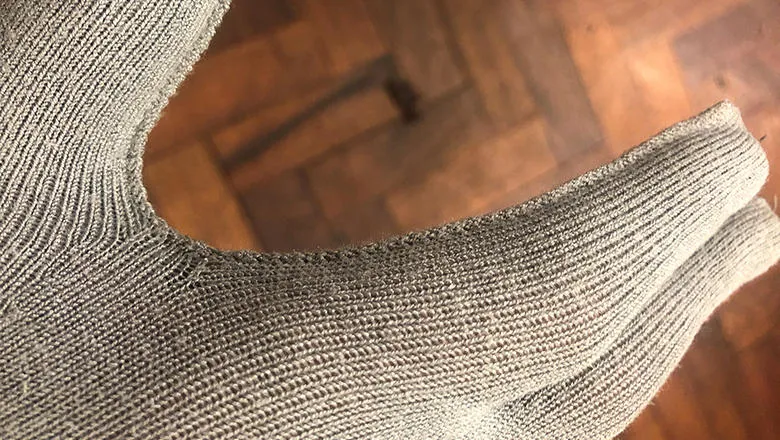How do you improve healthcare services for patients and staff alike? By bringing healthcare professionals, patients, carers and relatives together to identify issues and work creatively to address them in equal partnership.
Researchers at King’s have developed, tested, adapted, and evaluated a pioneering approach that enables patients and staff to work together in ways which enrich the delivery of health care services, gives patients agency in their care, and improves lives. The approach is called experience-based co-design (EBCD) and it has led to tangible changes around the globe.
It is widely recognised that patient and staff experience is key to quality healthcare provision, but all too often the constraints of budgets, usual ways of working, and performance targets mean that the patient perspective and views of frontline staff are sidelined. EBCD brings patients, caregivers, staff, and researchers together to share their experiences and then work as a team to improve how it feels to provide or use a healthcare service.
Work on EBCD has been led by Glenn Robert, Professor of Healthcare Quality & Innovation in King’s Faculty of Nursing, Midwifery & Palliative Care. EBCD has been developed and refined for over a decade through ongoing collaborations with colleagues at King’s (Dr Sara Donetto and Dr Vicki Tsianakas), researchers in other universities, healthcare organisations and the third sector. Independent researchers around the world have described the impact it has had, both on patients' lives and staff perspectives.
Sharing experiences: What is experience-based co-design and how does it work?
EBCD is an iterative process that uses design thinking and rigorous qualitative research methods to help identify problems in the delivery of healthcare and then empowers patients and staff to develop and implement solutions. Patients and staff are invited to share their experience of a healthcare service, listening to each other's stories and perceptions through a carefully facilitated process.
Participants use creative tools to help visualise and share their experiences. For example, emotional mapping can help pinpoint positive and negative feelings about specific aspects of patient and staff experiences of a service. Videos of individual patients telling their stories can be used to encourage shared reflections amongst - and engage - wider groups of both patients and staff.
Teams of patients and staff can then mutually decide on the issues that they would like to take forward to improve their shared experiences, and work together, identifying and implementing solutions in small groups.
For instance, EBCD has been effective in improving patient and staff experience on stroke wards. Improvements that have been made include: making spaces for social interaction between patients, staff and family members; creating an area for art and therapy groups; the introduction of therapy dogs; and personalising bed spaces to make patients feel more at home. When patients felt there needed to be clearer communication about what to expect during their inpatient stay, the EBCD team developed a webpage and flyer. When patients reported a lack of things to do on the ward, the team worked to introduce activity boxes for patients to use during their downtime.
Once changes have been prototyped, iteratively tested and implemented, the EBCD process moves to reporting, evaluating, and celebrating the successes of the project, as a way of demonstrating the value of this and similar approaches to further patients and senior staff in healthcare organisations. This helps to gain buy-in for EBCD in other services and encourages a culture of collaboration and continuous improvement.
EBCD has the potential to produce much more than improved facilities and stream-lined clinical processes. Indeed, it may lead to better and lasting relationships, deeper and more personal understandings, and therefore more sophisticated insight into the increasingly complex nature of health-care provision and the opportunities it harbours for improvement.
Quote from a member of an independent research team studying the use of EBCD in Emergency Departments in Australia.
Over a decade of research - a brief history of experience-based co-design
The EBCD approach was first piloted by a team including Professor Robert in 2005 at the head and neck cancer service at Luton & Dunstable NHS Trust. This initial work is described in the book, Bringing User Experience to Healthcare Improvement, by Paul Bate and Glenn Robert.
In 2008, EBCD was used by four cancer care services in central London and internationally by seven emergency departments in Australia. It was also used by an Emergency Department in England to improve services for frail elderly patients with palliative care needs. As a result of its use in the four cancer services, a free online toolkit was developed. This was updated in 2013 with further case studies and additional resources. The toolkit remains a vital source for healthcare practitioners wanting to make a change within their local services as well as supporting doctoral and post-doctoral students interested in drawing on the approach.
King’s researchers conducted an international study of EBCD projects in 2015 and found that at least 59 projects had been implemented and 27 were at planning stage – in the UK, Canada, the Netherlands, Sweden, Australia, and New Zealand. This informed an overview article published in the British Medical Journal in 2015.
Users of EBCD reported that, while effective, the method was time consuming, so King’s researchers worked with others to create an accelerated method to allow services to realise the benefits of EBCD sooner. With colleagues, the team conducted ethnographic process evaluations in two NHS acute Trusts (in lung cancer services and Intensive Care Units) and as a result, adapted the process to utilise an existing library of filmed patient narratives. Researchers found that the accelerated approach typically halved the project time from 12 to six months and cut costs by 40%. Findings from this research were published in the Journal of Health Services Research & Policy in 2014.
Influencing policy and practice: how the research is being used
The EBCD approach has directly led to better patient experiences in different healthcare settings, pathways, and in countries around the world. The team’s work on EBCD was cited in the 2010 NHS White Paper ‘Equity and excellence: Liberating the NHS’, which stressed the need to put patients and the public first.
EBCD has now been implemented in over 100 clinical services in at least eight countries, including the UK, United States, Australia and New Zealand.
Some of the areas that have benefitted from EBCD include the nutrition and wellness of HIV positive children in a South African Township. Here mothers, caregivers and staff worked together to identify 40 practical improvements that could be made both in pediatric services and the hospital and primary care clinics. In Los Angeles, EBCD was used to improve former prisoners’ access to health and social care services. The technique was used to identity priority areas for improvement, gaps in services, and key design principles for enhancing the experiences of returning citizens. And in England and the Czech Republic, EBCD has been instrumental in enabling effective, family-centred communication with patients undergoing genomic sequencing.
The team at King’s has continued to collaborate with third sector organisation the Point of Care Foundation. The online toolkit hosted by the Foundation has been visited by 35,000 visitors from 159 countries since 2017. And since 2014 a day-long EBCD ‘open course’ has been delivered to over 30 healthcare organisations. In total, more than 1,600 people from 470 organizations around the world have been trained in the EBCD method.
Patients report that EBCD is a constructive method to enable them to work with their healthcare professionals in more collaborative ways and to help them regain some agency in their care. They can see firsthand that their insights and impressions are considered and acted upon. Staff that have been part of an EBCD team say that the process has reconnected them with the reason they first entered the profession.
For patients like myself and our relatives, being involved in such a co-design project is one of the most constructive ways of giving something back... Developing interpersonal relationships between patients, their relatives and healthcare professionals was rewarding in itself and created a safe social environment in which to work. Staff were inspired by what we had to say... my initial expectations of what to expect were far exceeded.
Intensive Care Unit (ICU) patient involved in ECBD
The future of experience-based co-design
EBCD continues to inform current research at King’s. Dr Tsianakas will soon be working with colleagues at the University of Surrey on an EBCD study which seeks to understand and improve the experiences of people with learning disabilities and their families when they use virtual consultations. The study’s findings will inform development and implementation of best-practice guidance, training, and support.
Dr Donetto is currently a co-investigator on an ESRC-funded study that aims to develop a co-designed digital platform to support the mental and emotional health of young people affected by the conflict in Colombia. She is also involved in research exploring the co-design possibilities for improving integrated community palliative care for people who are frail and have chronic illnesses.
Former student Sarah McAllister’s doctoral research sought to understand and improve engagement between nurses and patients on acute metal health inpatient wards. It has been used successfully to redesign services and reduce formal complaints.
EBCD is increasingly being used to co-design specific healthcare interventions. Work by King’s doctoral student Mary Tanay is testing an intervention that encourage cancer patients to report symptoms of chemotherapy induced peripheral neuropathy (CIPN). Some cancer drugs cause damage to nerves, resulting in CIPN. By reporting symptoms early, it is hoped that patients can work with healthcare professionals to minimise the impact the drugs have on their lives.
Professor Robert has collaborated with NIHR Clinician Dr Marietta Stadler in the Faculty of Life Sciences & Medicine for her ongoing study to develop a complex intervention for people with type 1 diabetes and disordered eating (STEADY). Using EBCD, they developed a cognitive behaviour therapy intervention toolkit which could be tailored to a person’s needs. This intervention aimed to improve diabetes self-care embedded in a multidisciplinary healthcare approach. Delivered in 12 sessions by a diabetes specialist nurse trained in cognitive behavioural therapy, the intervention is going to be tested in the STEADY feasibility randomised controlled trial.
Beginning in May 2022, Professor Robert will also be co-investigator on Forced to Flee, a major new NIHR-funded study to co-design a peer-led community approach to supporting the mental health of refugees.




